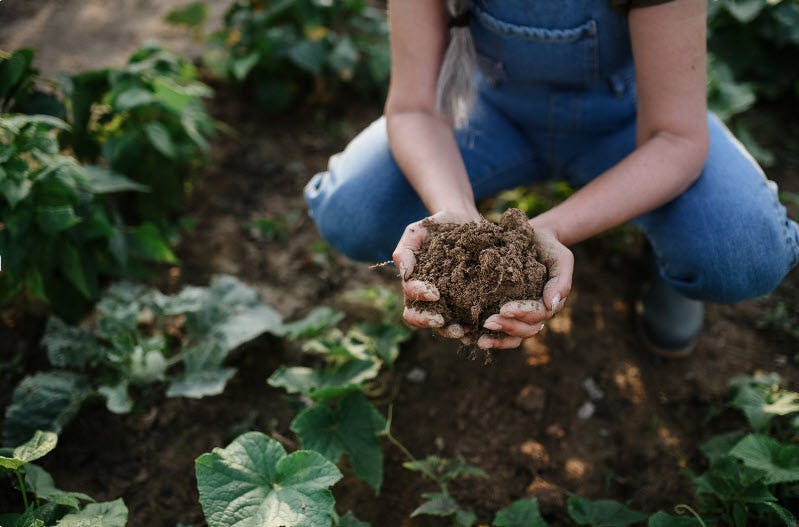Blue Dot Brief, Issue 4
Helping impact investors find the right regenerative investments to meet their objectives
August 12, 2024
Word count: 858. Reading time: 4 minutes
ABOUT THE BLUE DOT BRIEF
Twice monthly, the Blue Dot Brief covers topics related to investing in regenerative culture and community.
Please visit this page for more on the goals and purpose of the Blue Dot Brief, brought to you by the Blue Dot Project.
IN THIS ISSUE
Words to ponder: Quotation from Paul Hawken’s book Regeneration: Ending the Climate Crisis in One Generation.
Featured article: “5 regenerative investments that can reduce climate change and other environmental crises,” by Eduardo Esparza, founder of the Blue Dot Project.
Podcast update: No new podcast episode for the Blue Dot Project Podcast will appear in August. Please look for the next episode in the second half of September.
In case you missed it: Why these 23 funds with $3.75B AUM could transform agriculture and food production
Resources: Learn about regenerative finance and economics through remote learning from the Capital Institute. Also: 2 PDFs downloadable at no charge from Coalition Culture: Regeneration Roadmap and Sustainable and Regenerative Tourism.
WORDS TO PONDER
"From the planet’s point of view, there is no difference between a climate denier and someone who understands the problem but does nothing. The number one cause of human change is when people around us change. Research by Stanford neuroscientist Andrew Huberman upends the idea that beliefs determine what we do or what we can do. It is the opposite. Beliefs do not change our actions. Actions change our beliefs.”
–Paul Hawken. From his book Regeneration: Ending the Climate Crisis in One Generation. 2021.
FEATURED ARTICLE
5 regenerative investments that can reduce climate change and other environmental crises
By Eduardo Esparza, founder of the Blue Dot Project
How can you get started with regenerative investing?
Why it matters
Investors who are new to funding regenerative projects may feel overwhelmed by the variety of options available. It can take a lot of research to find initiatives that fit an investor’s ideal portfolio.
Go to the full article here for a list of five useful places to start your research.
It’s the fourth in a series. You can find parts 1, 2, and 3 at these links.
PODCAST UPDATE
The Blue Dot Project Podcast will publish its next episode in September
Because of heavy work activity and vacation schedules, no new episode of the Blue Dot Project Podcast will appear in August.
Please look for Episode 8 of Season 2, with regenerative village design consultant Nicole Reese, in the second half of September.
IN CASE YOU MISSED IT
Why these 23 funds with $3.75B AUM could transform agriculture and food production
A group of 23 funds for regenerative agriculture hold the promise of regenerating soils of abandoned or depleted farmland around the world.
Why it matters
Investment in regenerative agriculture can also regenerate people, communities, and whole ecosystems.
Billions of dollars of investment capital are likely to fund regenerative agriculture in the next 10 years.
Funds provide a relatively easy way for new investors to identify and start researching opportunities.
Dig deeper
The website for Investing in Regenerative Agriculture provides a Google spreadsheet with details on each of 23 funds around the world.
The funds include projects for farmland in the USA, Europe, Latin America, Australia, and Asia.
Investing in Regenerative Agriculture last updated their list in April 2024.
RESOURCES
Learn about regenerative finance and economics through remote learning from the Capital Institute
For a convenient and relatively low-cost way to learn about regenerative finance and economics, don’t miss the courseware offerings from the Capital Institute.
Their website describe them as a “non-partisan think tank working to create a more just and sustainable way of life on Earth.”
The Institute, founded by former Wall Street investment banker John Fullerton, offers an online course called the Fundamentals of Regenerative Economics.
You can start the course at any time. It’s fee is $200.
A more detailed follow-on course is the Institute’s Introduction to Regenerative Economics. This cohort-based course runs for eight weeks, with the next cohort starting September 4. The fee is $1,000 per person.
For a taste of John Fullerton’s thinking, download a 29-page PDF of his white paper Finance for a Regenerative World at no charge.
Explore tools for regenerative development with two free white papers from Coalition Culture
The website for Coalition Culture describes the organization as “a consulting agency formed by a collective of creators using collaboration and creativity as resources for sustainable development.”
Here are two of their white papers likely to be of interest to impact investors:
Regeneration Roadmap. Downloadable PDF. 54 pages. No charge.
Sustainable and Regenerative Tourism. Downloadable PDF. 51 pages. No charge.
WRAP UP
If you’ve enjoyed this issue, please share it with your friends and colleagues. Also consider subscribing so you don’t miss anything in future issues.
If you have questions, comments, or suggestions, I invite you to share them in the Blue Dot Brief chat at Substack. Or email me at editor@bluedotproject.com
See you in two weeks.
Best wishes,
David Vranicar, editor




